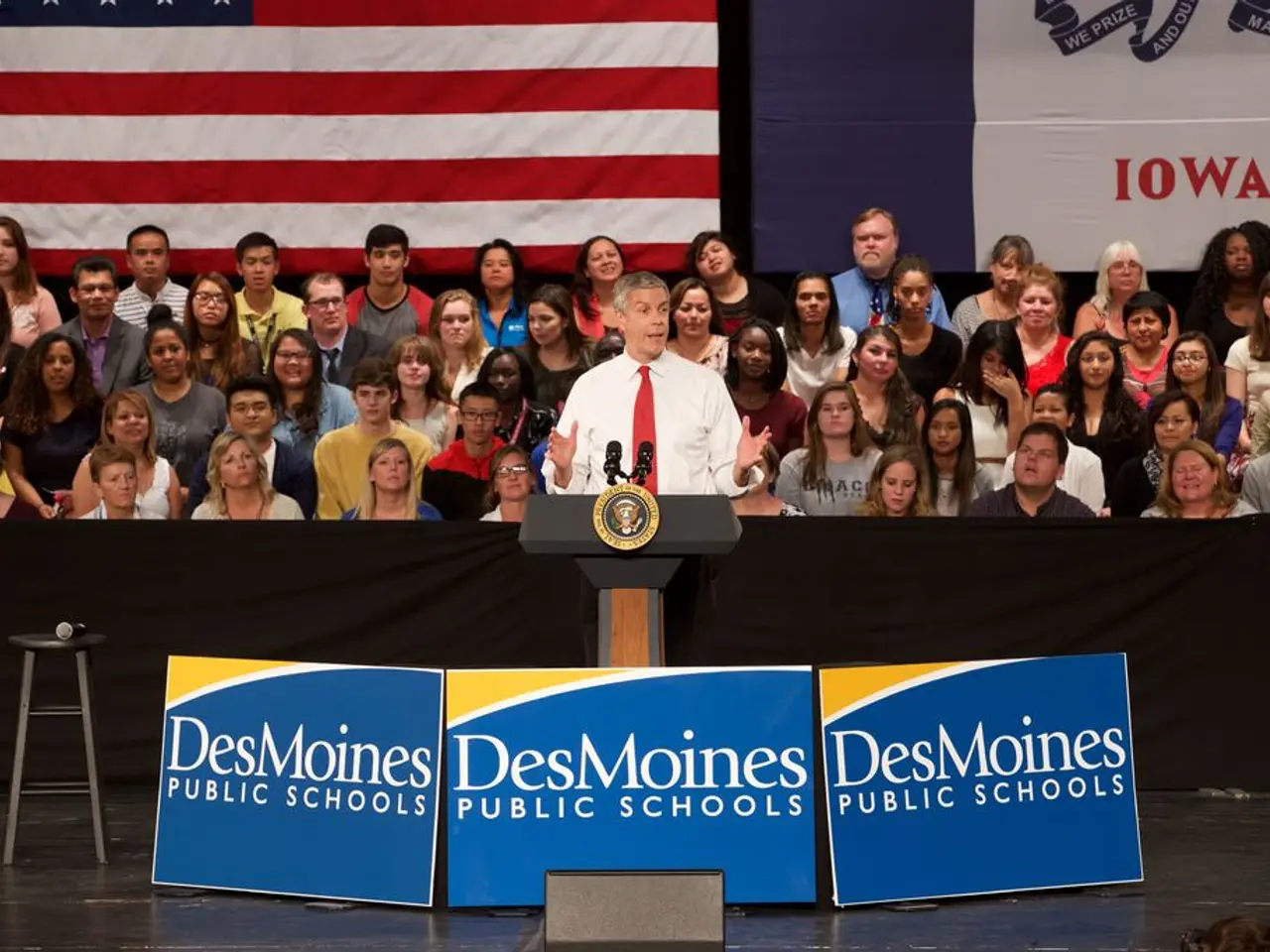Decision by SCOTUS Uproots Decades-Long Precedents, Threatens American Identity, as Analyzed by Bill Straub
The United States Supreme Court's actions during the Trump administration have raised significant concerns about the Court's role in maintaining constitutional order and safeguarding democratic norms. Critics argue that the Court's increased use of the "shadow docket" has empowered a lawless executive, potentially leading to wreckage strewn across the constitutional landscape.
The shadow docket refers to emergency rulings the Court issues without full briefing, oral argument, or detailed explanation. During Trump's presidency, the Court frequently used this mechanism to issue major decisions that often favoured the administration's policies, frequently with little or no reasoning provided.
This trend was notable for its frequency and partisanship. The Trump administration sought emergency relief from the Court far more often than previous administrations, and the Court sided with Trump nearly every time on the shadow docket. This has resulted in confusion and difficulty for lower courts that must navigate between binding precedents and these vague emergency rulings, undermining legal clarity.
The use of the shadow docket has been criticized as allowing the Court to effectively rubber-stamp executive actions in politically charged cases without the usual procedural safeguards, weakening judicial independence and transparency. This contributes to perceptions of partisanship and harms public confidence in the judiciary.
By permitting controversial policies to proceed without comprehensive judicial review, especially when lower courts had found them likely unconstitutional, the shadow docket under Trump facilitated executive overreach and limited meaningful checks and balances. It affected fundamental rights and policy areas such as immigration and education without robust judicial scrutiny.
The Supreme Court's actions allowed Trump to go ahead with measures that violate established precedent, such as mass firings and lay-offs in various departments, and the so-called reduction in force while the court case proceeds. The Department of Education, created by Congress in 1979, disburses about $150 billion annually to improve educational quality. However, under Secretary Linda McMahon, the department fired about 1,300 workers, rendering it impossible for the agency to conduct business.
The federal workers sued, and the lower courts determined the action to be unconstitutional, but the Supreme Court, using the shadow docket, allowed Trump to proceed. Similarly, the firing of members of the National Labor Relations Board and the Equal Employment Opportunity Commission was seen as Trump's effort to kill worker-focused agencies.
The current political climate under President Donald J. Trump has shifted towards an autocracy, with Trump signing numerous executive orders on matters outside a president's traditional authority. The Supreme Court, with three justices appointed by Trump, has embraced the "shadow docket" and the unitary executive theory, which gives Trump virtually unfettered authority.
This expansion of the shadow docket has historically significant implications because it challenges the Supreme Court’s traditional role as an independent, transparent arbiter. It enables rapid and largely unchecked executive action, thereby raising serious concerns about the Court’s role in maintaining constitutional order and safeguarding democratic norms in the United States.
References: [1] Biskupic, J. (2020, October 2). The Supreme Court's shadow docket is a disaster for democracy. CNN. https://www.cnn.com/2020/10/02/opinions/supreme-court-shadow-docket-disaster-for-democracy-biskupic/index.html [2] Roberts, R. (2021, March 31). The Supreme Court's Shadow Docket Is a Threat to Democracy. The Atlantic. https://www.theatlantic.com/ideas/archive/2021/03/supreme-courts-shadow-docket-threat-democracy/618550/ [3] Waldman, M. (2021, February 23). The Supreme Court's Shadow Docket Is a Threat to Democracy. Brennan Center for Justice. https://www.brennancenter.org/our-work/analysis-opinion/supreme-courts-shadow-docket-threat-democracy [4] Wittes, B. (2020, October 2). The Supreme Court's Shadow Docket Is a Threat to Democracy. Lawfare. https://www.lawfareblog.com/supreme-courts-shadow-docket-threat-democracy
- The shadow docket, used frequently and partisanly during the Trump administration, has empowered the executive, potentially leading to constitutional chaos.
- This unconventional method, employed by the Supreme Court, has often bypassed regular proceedings, creating confusion and undermining legal clarity.
- Critics argue that the use of the shadow docket undermines judicial independence and transparency, thus harming public confidence in the judiciary.
- Favouring the administration's policies over constitutional precedent, the shadow docket has facilitated executive overreach, particularly in areas like immigration and education.
- In the realm of general news, the shadow docket's apparent political slant hints at eroding checks and balances, thereby compromising democratic norms.
- The detrimental effects of the shadow docket extend to broader issues like crime and justice, education, and the environment, undermining policy- and legislation-making processes.
- The trend of engaging the shadow docket under Trump has been seen as a step towards autocracy, furthered by the Supreme Court's embrace of the unitary executive theory, which potentially threatens constitutional order and the role of the Court in maintaining democratic norms.








